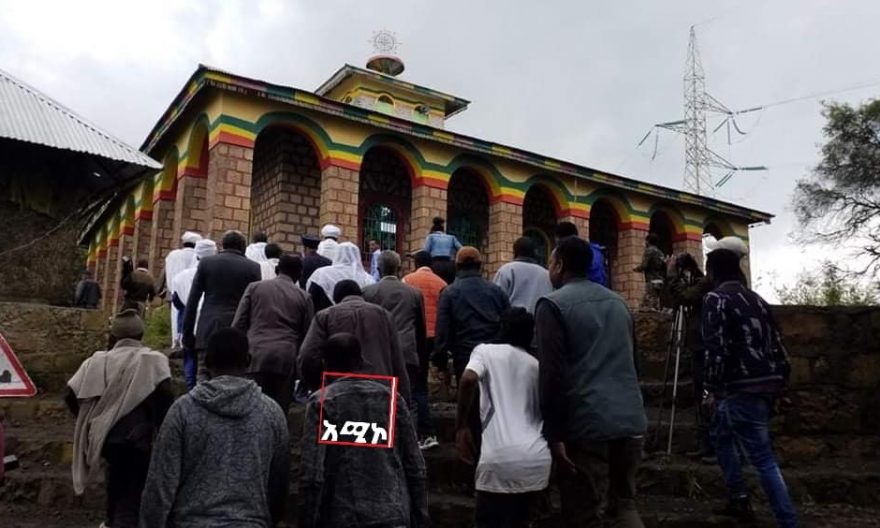
Cultural heritages are significant to strengthen the national and cultural identity of a given country while war and armed conflict pose the greatest risks to them. As a result, international laws have provided for the protection of heritage in the event of armed conflict.
Monuments are the buildings or structures famous for their architectural heritage that are given protection under international law. They are durable and famous symbols of the past. Everyone can get a lot of historical and political information from monuments.
Church, temples, mosques, memorials, buildings, landmarks, pillars, edicts, fountains, graves stones, monoliths, mounds, palaces, statues, war memorials, towers, tombs, and so on are among the various types of Monuments. Cognizant of this, the United Nations Educational, Scientific and Cultural Organization (UNESCO) have been established to conserve, preserve and protect buildings from civil wars, terrorist attacks, vandalism and so on.
Ethiopia has various heritages that are registered by UNESCO. The country is endowed with incredible rock-cut churches embodying great architectural, aesthetic, and artistic significance built over its past. However, these priceless cultural antiquities are frequently confronted with different threats. Currently, many heritages face threats from the terrorist TPLF group.
Ethiopian Authority for Research and Conservation of Cultural Heritage (ARCCH) Deputy Director-General Assistant Professor Abebaw Ayalew told the Ethiopian Herald that the terrorist TPLF is proving its hatred by destroying cultural and historical heritages.
The terrorist TPLF group has attacked the Checheho Medhanialem Church, which was built in the fourth century which is found in the Amhara Regional State and is serving the people. This action shows the irresponsibility of the terrorist group, he said.
Custodian of the Cathedral, Merigeta Abraraw Melesse said that forces of the terrorist group have fired heavy artilleries against the church and annihilated the buildings and the treasures inside it.
The atrocious crime the renegade group committed against the cathedral apparently shows how the group is moving against the will and security of the general public, he added.
In addition residents of the hsitorical Lalibela town said the historic Lalibela heritage is surrounded by Junta militants. The same eyewitnesses said the residents were told that they could not get close to the tomb and that their efforts to look into the distance were unsuccessful because of the junta.
The witnesses added the Lalibela airport was looted by the terrorist Junta group and is out of service.
President of the Amhara Regional Islamic Council and vice chairman of the Amhara Regional Council of Religious Institutions Sheikh Mohammed explain that religious institutions are the heritage of the country and should be protected by all.
There is no need to give time to the terrorist group to destroy the nation’s heritage. So, the entire nation including international communities should work hard to rebuild the heritages that are attacked by the terrorist TPLF group, he stressed.
It is true that war and conflict have been the main cause which has made it difficult the preservation of heritages in Ethiopian. Tsegaye Ebabey in his academic article in 2019 entitled “Threats to Cultural Monument in Ethiopia: Based on Evidence of Causes and Problems of Some Forgotten Rock-cut Churches” explained war and conflict have been negatively impacted the preservation and protection of heritage in Ethiopia. Because various antiquities of the country are lost due to the series of wars and conflicts that occurred since the staggering of the Aksumite Empire. Besides, there are also rock-cut churches that have lost their importance during the war of Ahmad Gragn.
According to the 1954 Hague Convention, cultural property is protected during the war in two ways; it is normally civilian in nature, the general provisions of humanitarian law protecting civilian property apply. Specific protection recognizing the cultural heritage of every person is cherished in the 1954 Hague Convention for the protection of cultural property during armed conflict, which was complemented by the 1977 additional Protocols, and has become part of customary international law. Moreover, the convention stipulated that conflicts parties are not allowed to direct hostilities against cultural property and must avoid incidental damage to such property.
In the more than 50 years since its existence, The Hague Convention has established a clear legal framework. It was reinforced by the 1977 Additional Protocols to the Geneva Conventions, the Statute of the International Criminal Court in 1998, and an Additional Protocol to the Convention itself in 1999.
The sad reality is that many works of art have been lost, and cultural sites damaged or destroyed in the war. Nonetheless, nothing has been done to the terrorist TPLF group by the international communities.
According to the press statement on “Protection of Cultural Sites” by the Ethiopian Ministry of Foreign Affairs on 6 August 2021, due to the attacks by the force in some areas in the Amhara Region, the people are concerned about the possible destruction of religious and other institutions by the terrorist TPLF which signify the centuries-old identity, religion, and culture of Ethiopian people. This concern stems from the fact that the TPLF has done a lot of pillaging, looting, and destruction over the past eight months.
Taking this fact into account, the government of Ethiopia disclosed the evil deed of the terrorist TPLF actions to the international communities. According to Assistant Professor Abebaw, the Authority for Research and Conservation of Cultural Heritage (ARCCH) has informed UNESCO and the international community about the terrorist TPLF attempt to destroy the country’s cultural and historical heritage, in a clear violation of international law.
“Although we are implementing various mechanisms to save the heritages from damage, the denouncement of the global community and UNESCO to the terrorist TPLF group is important to protect the cultural and historical heritage from destruction, he said.
In fact, UNESCO gas requested compliance with all relevant obligations under international law in ensuring the protection of the Exceptional Universal Value and heritage of this precious site by refraining from any act that could expose it to damage and taking all necessary precautions to prevent any attempt to loot and loot cultural assets located in the area. Nevertheless, it is not enough. Because the terrorist TPLF group has attacked the Checheho Medhanialem Church deliberately. Therefore, pressuring, held accountants, and exposing the terrorist TPLF work is important to the international communities.
BY EPHREM ANDARGACHEW
ETHIOPIAN HERALD 24 SEPTEMBER 2021




